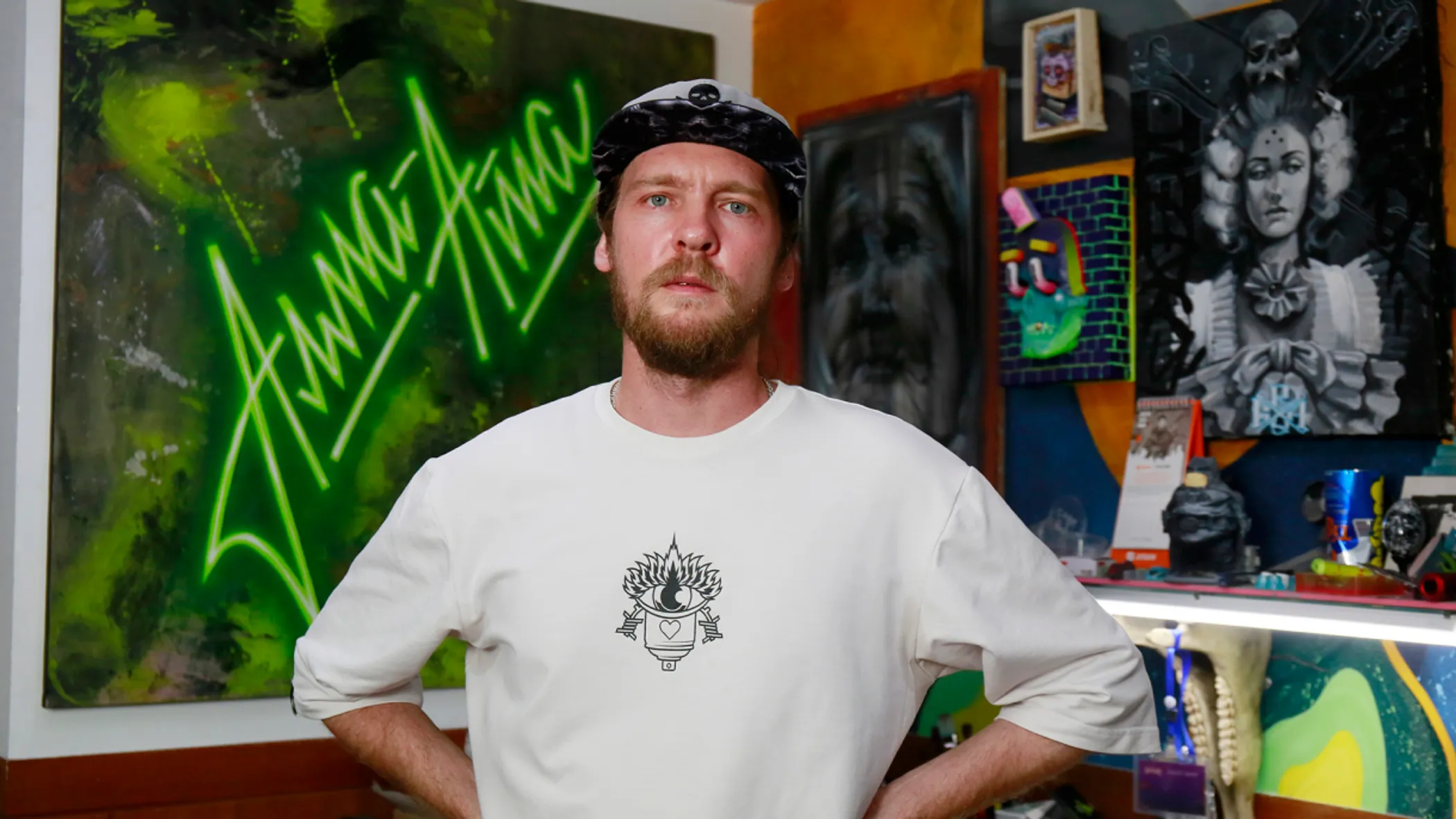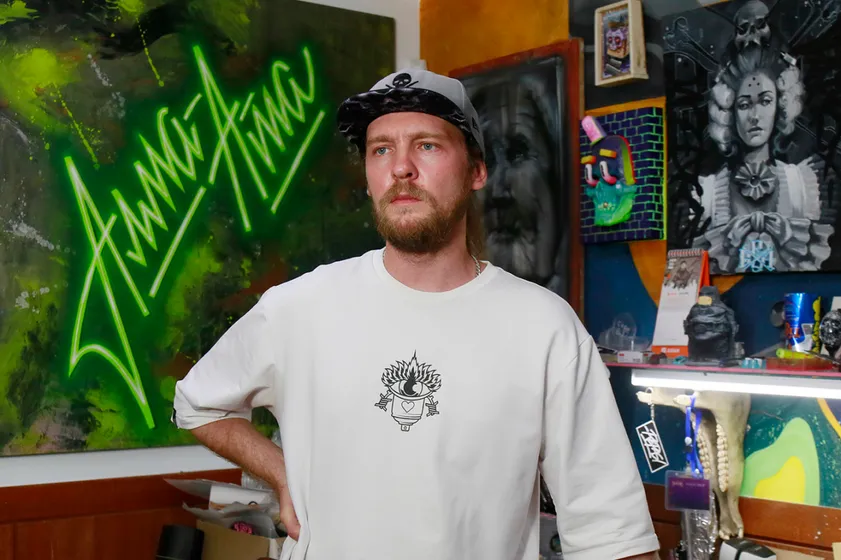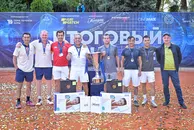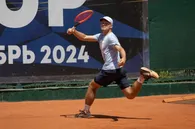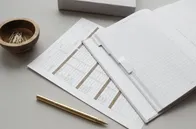When friends introduced the term ‘graffiti’ to Dmitriy DMN, a school kid back in the day, he quickly got into the swing of things seemingly feeling how to knock this craft to the new level, as he was reflexively doing some ‘pieces’ in his own way already. Just before taking art to the streets. Being the co-founder of Repas Workshop crew, he has become a heavyweight in the street art game and made a career painting one-of-a-kind graffiti pieces that drive cultural conversation in the art community and beyond.
Graffiti and street art communities per se have been through a lot recently, with everything from fining artists for tagging to buffed Almaty’s murals. However one thing that remains constant is Repas Workshop’s drift to create incredible high-grade yet statement-making legacies to pass to the next gen, one wall at a time.
QazMonitor visited the crew’s workshop to discuss inspiration, challenges of the street art community and buffed pieces of Almaty.
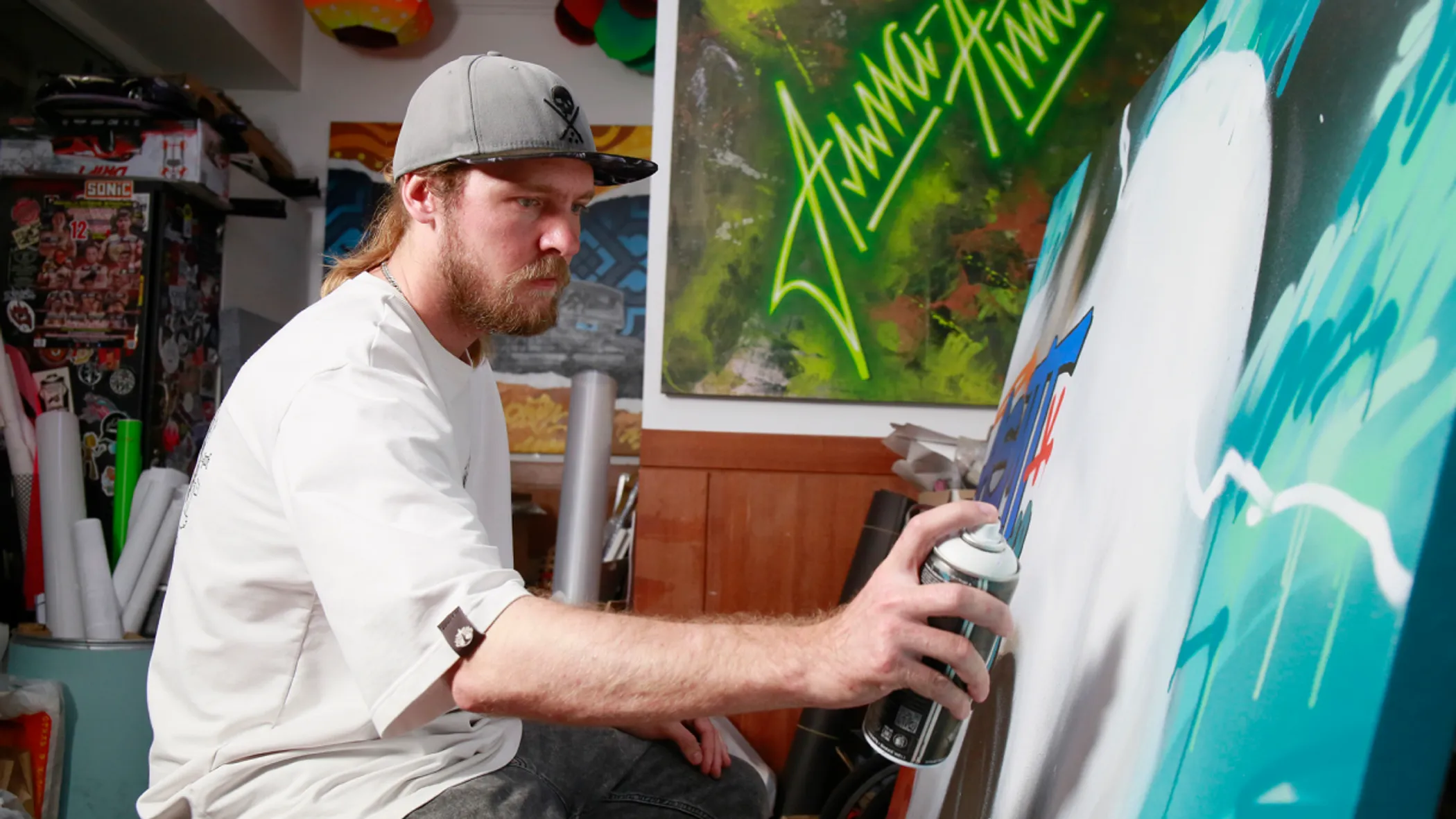
What kicked off your graffiti and spray paint art journey?
Well, initially I started doing graffiti way before I even knew it was a thing. I was captivated by lettering. I also was into metal and stuff. They had the dopest stylized inscriptions with the band’s name on album covers, like the ones Metallica, Iron Maiden or Cannibal Corpse had. So I drew them. Later I realized I could modify and use these styles to write my classmates’ names or mine. I started to get into it more and more.
Once someone told me: “You know, that’s called Graffiti. That stuff is done on the walls” Snap! After a while, I was introduced to MTV, V Channel and КРУТО magazine, which, by the way, once had the whole spread on graffiti. Then the first bits of the web came into the picture, and my friends who had the internet burned some images on floppy discs for me, you know what I’m saying. Later we created an online forum Rap.kz, where the whole graffiti community used to hang out. So we were wrapped up in the culture and it kept snowballing. In 2007 we made a crew together called SAP (Street Art Production), which surged to our first workshop SAPER (derivative of SAP). Then we put a little twist in it by flipping it upside down so we ended up with REPAS.

When did you realize it’s getting pretty serious?
When I went to college, I straight knew this was my thing, what I was going to do with my life. I took on some projects – doing some wall art in cybercafes and all. People started to recognize my pieces and I took it from there. I’ve never worked a day anywhere, I didn't do anything but that as luck would have it. I stuck with art.
That’s a high calling though!
I think that I am just lucky enough to have it. I hit the jackpot.
Where does your inspiration come from?
In short, well, from everywhere around. Basically, we imitate nature in one way or another. It’s predicated on that, right? In terms of colors, for example, I don't think much about whether they are complementary, flattering or not. I just close my eyes, and imagine the landscape scene with these color combinations. If I like it, and they work well together, I’ll run with it. That’s how our creative wheel is rolling. Also, we don’t like to feature too social themes in our pieces too much, because it would be an easy way out to talk about issues that are clear for everyone anyway.
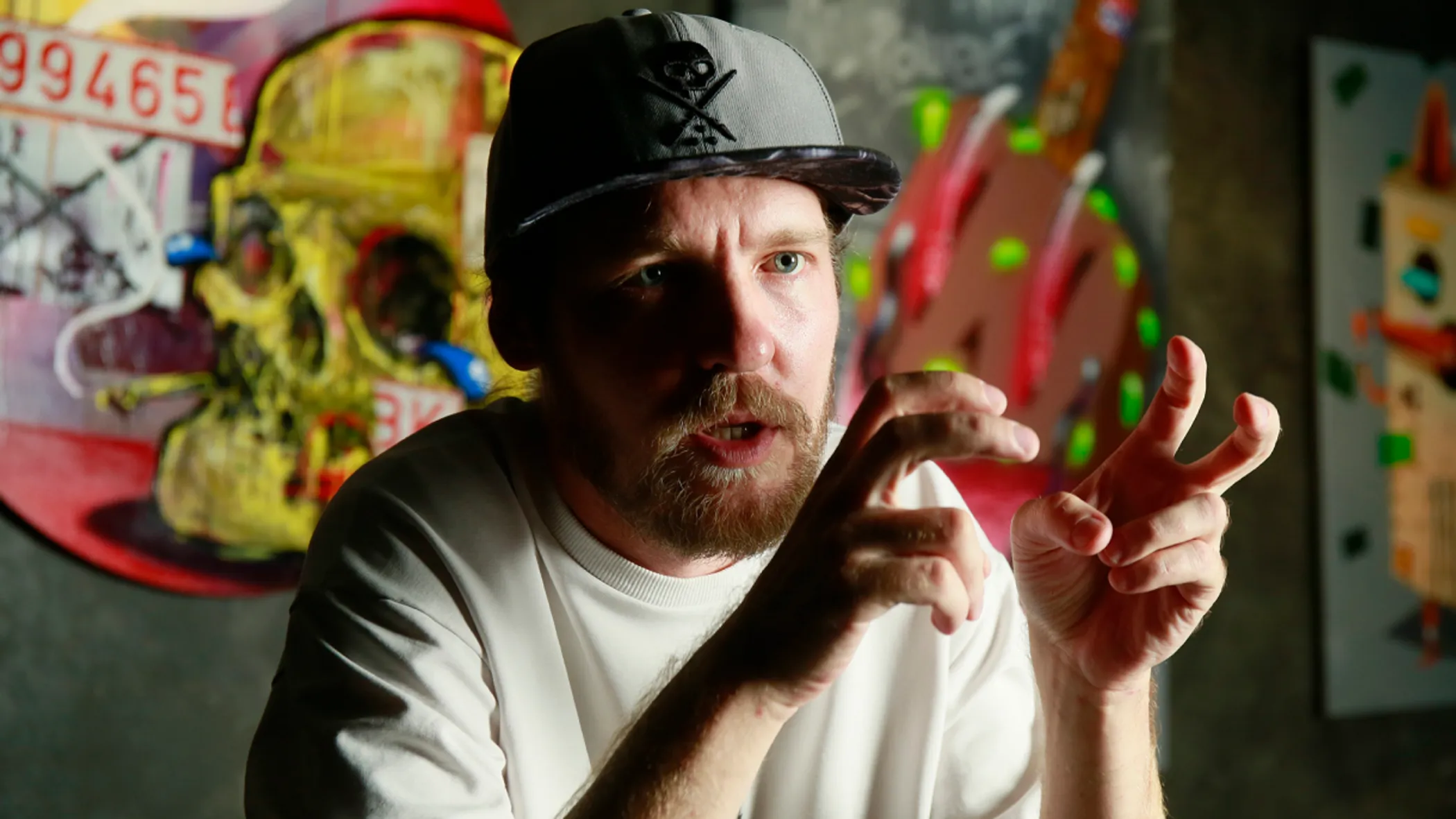
Well, your every piece speaks for itself. Looks like, it’s a statement anyways.
It’s all about the approach. We are people from the streets. I worked my way from tagging everywhere – walls, railings, street signs – to exploring the city, urban studying. I have a hard-core foundation, as I immediately started off painting in the city, you know. And we feel the city flow, we understand where people come from, their perspective to the art piece, how they look at it, as they are on the receiving end.
The thing is that people perceive a lot of things subconsciously. The key is to create stories they relate to, to intertwine art with the history of the city. Your body of work should not lose touch with the city vibes, it should belong to the streets, you understand where I’m going with that.
It’s impossible to make a ready-to-go sketch and simply transfer it to the wall. It’s not another advertising banner! If you work for someone, it’s extremely important to create some skeleton to define the direction. You have to fit the piece into the city, cooperating with the environment during the work. This is essentially a sort of counter-culture that sets art over against advertising. Unfortunately, some writers in the community fall from grace and come to terms with their conscience for monetization purposes.
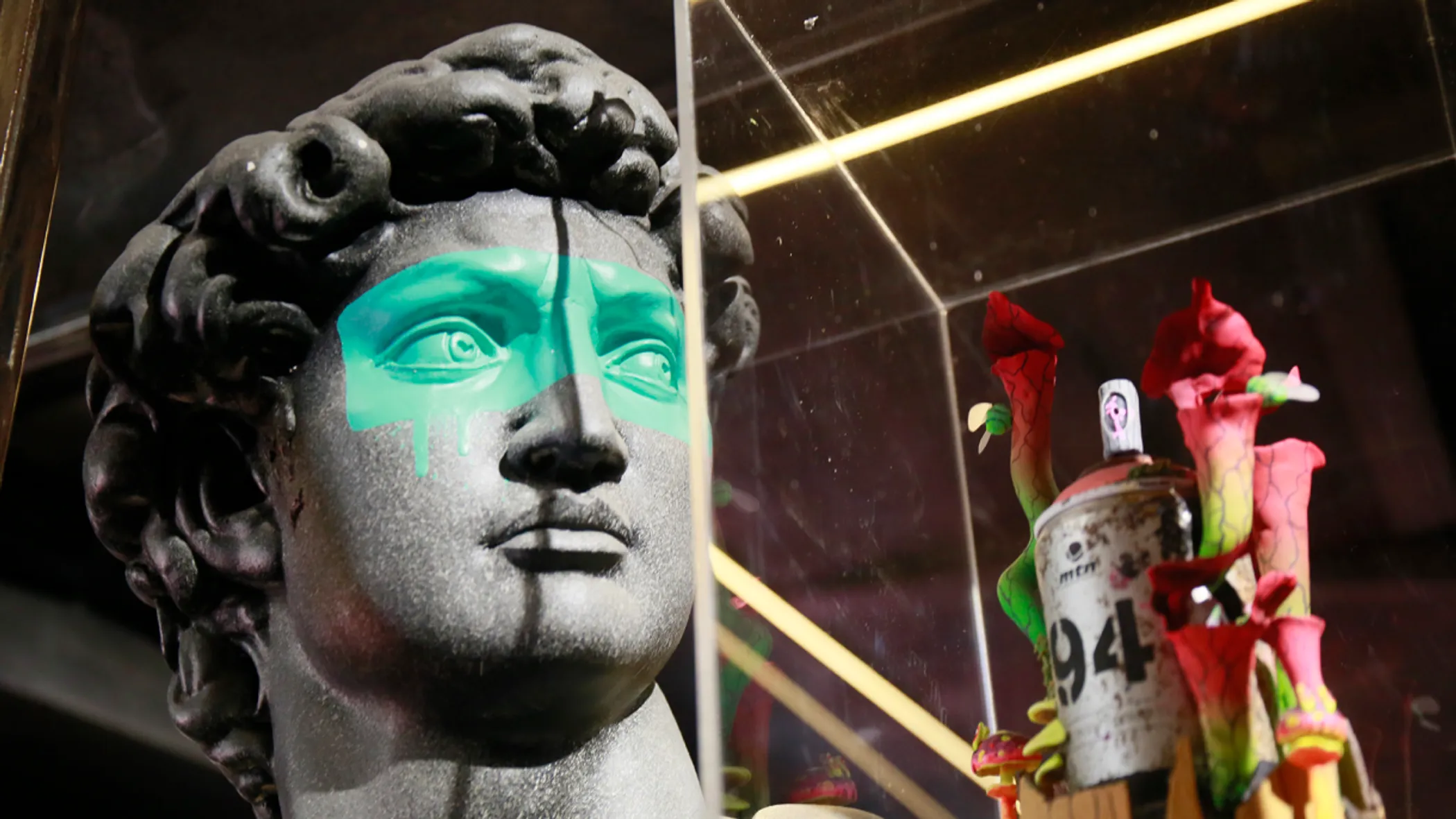
Speaking of the graffiti community, how is it developing right now? Are there any common grounds for graffiti writers around the country, where you can hang out and exchange experiences?
Yeah, Repas Workshop is sort of stomping ground. It’s community and brotherhood. Whether a writer goes to, say, Africa, Paris, whatever, he makes connections with the local graffiti community. And they welcome you like a distant relative, as if they knew you all their life, but never had a chance to meet you in person. This is how it works.
I mean, the community is in progress, especially in bigger cities. It’s a human need to change something around, to make a contribution and leave an imprint like ‘I was here’.
If you come to a city and nothing is painted on the walls, I'm not talking about some sick refined technique level, but just ‘body parts' at least, it gives a pause for a thought of a suppressed society, you know. I think it’s cool that in the age of iPads and XBoxes, teenagers get off their backsides to paint, express themselves and create, spending money on cans and taking a risk to get busted.
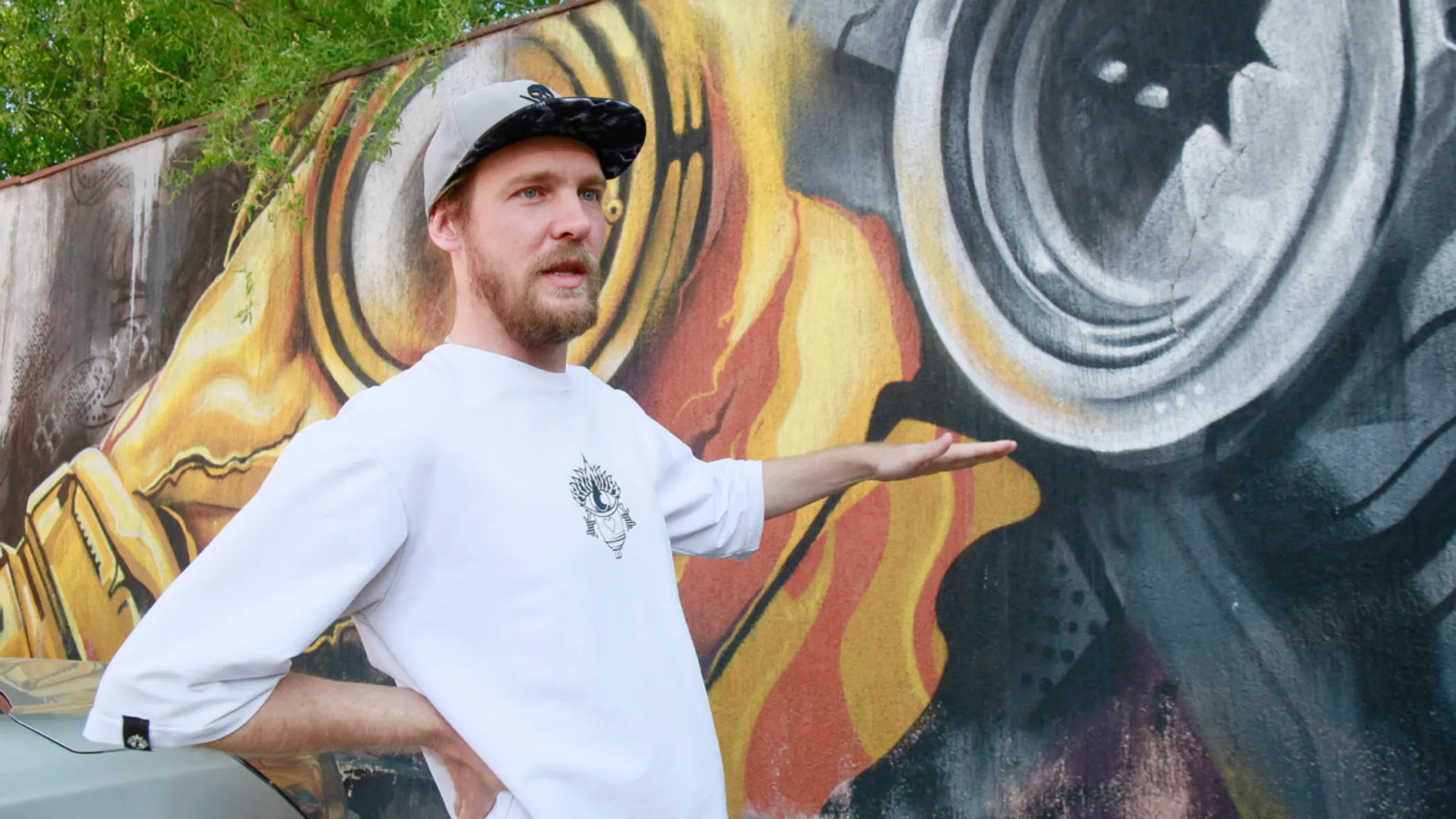
Take us through the main problems in the graffiti and street art communities.
When it comes to graffiti, there are actually more problems in the regions. Because graffiti, even tagging, is treated decently here in Almaty. Except for the stenciled drug ads, which obviously lead to people misjudging and discrediting the regular taggers. In general, people in most regions are not quite ready for art. Take Vanya Ryaskov’s case in Karagandy [Ivan Ryaskov, artist and director, who was fined for tagging the city. – QM], for instance. I remember we used to do pieces on garage walls, in yards, and local old ladies shielded us from the police, warding off. [laughs] We've got a HOF there [Hall of Fame – QM], a wall everyone can paint on.
Speaking of murals, the whole story with buildings’ facades has been immensely discredited, they are more of advertising and promotional nature now, this affects the quality of art – sometimes artists can’t produce their best work, or clients cut costs on artists’ work and hire inexperienced arts students.
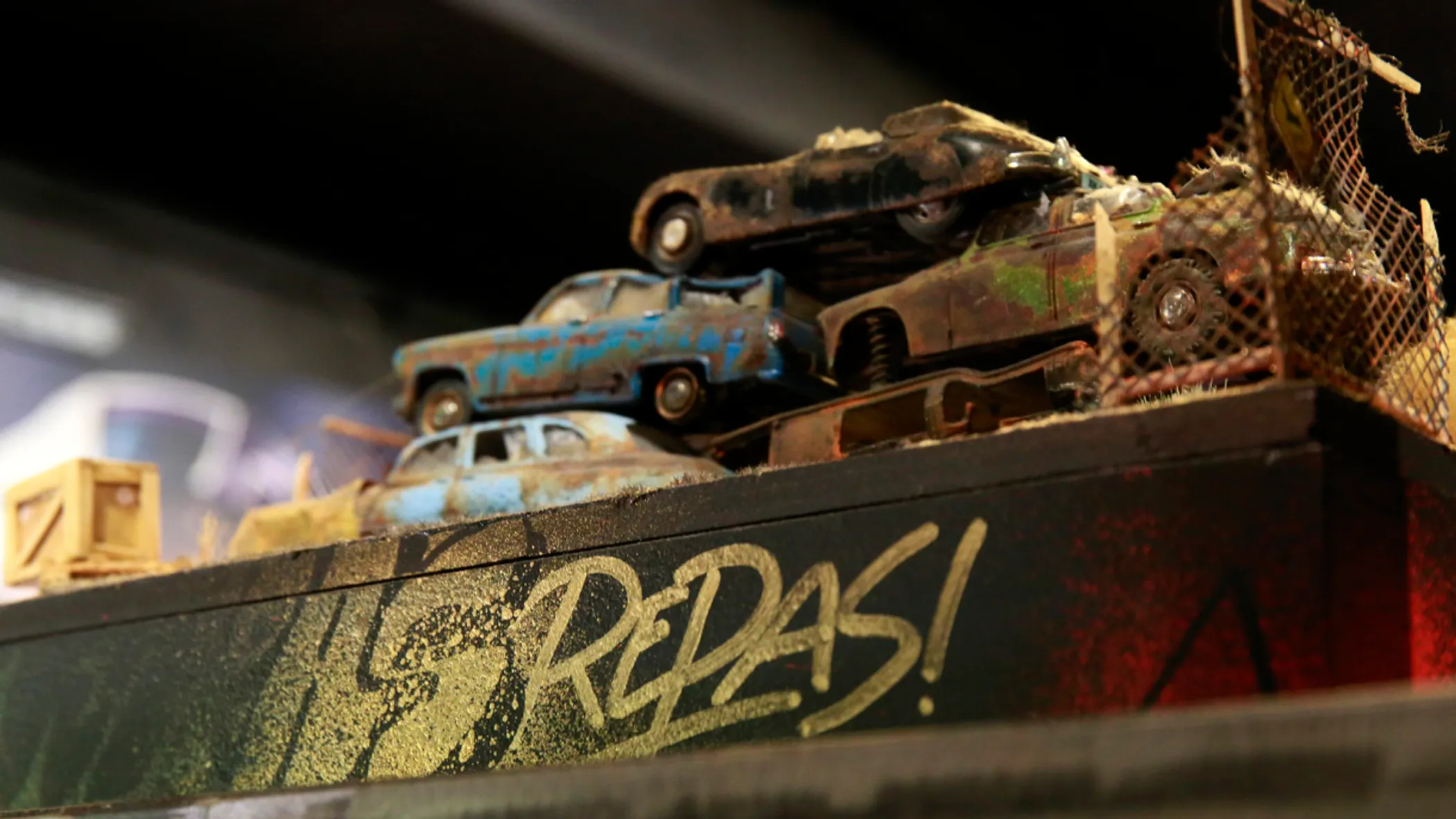
Just on a personal note, when any artist creates a piece, he should think long-term, because he has a reputation, portfolio and social responsibility after all, you know what I mean. For example, I have a son. Before I create something, I take into account he would walk past these pieces. They absorb information unconsciously, and I want to deliver first-rate work to cultivate taste, show him standards, and raise bars. I want him to pick out aesthetics and stuff.
When you are fourteen, painting 'body parts' on a fence is totally fine. But when you are twenty-five, you’ve got to think of the legacy you leave behind.
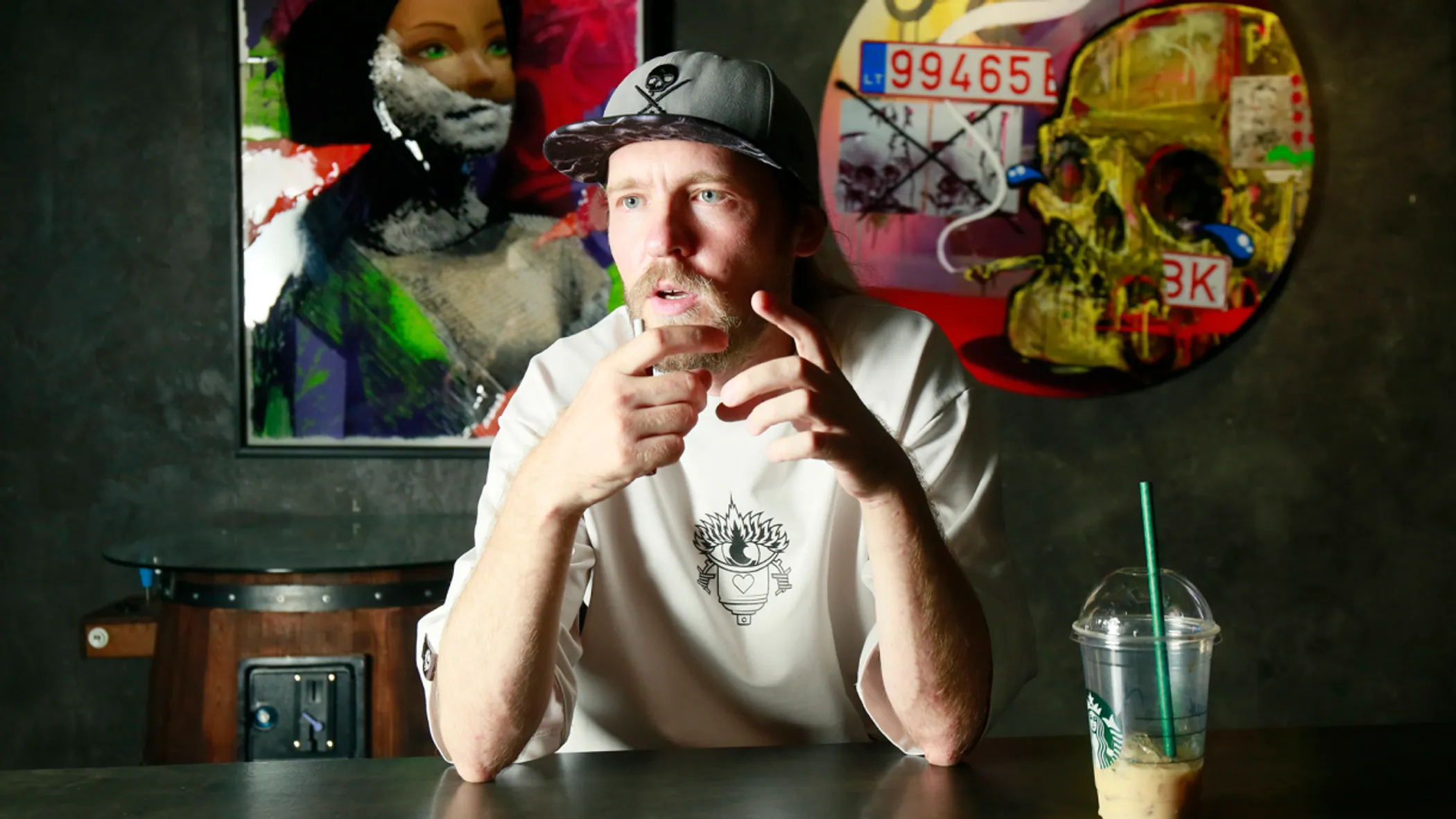
Speaking of advertising, the first thing that springs to mind is the ‘Snow Leopard’ mural that has been painted over with a Coca-Cola ad recently…
It's literally like opening Pandora's box, sort of a disaster that has been narrowly averted before all this stuff. I mean, there are several events that prefaced this story though. The facade on Al-Farabi Street executed by Artez from Serbia was buffed, then the work of Siсkboy from England was the next to be covered.
Eventually, this buff machine crashed into the wall with the murals of Saule Suleimenova and her husband. This is the first case of an ad interfering with art. Eventually, some facades were won over, thanks to citizens, activists and bloggers. It could have been any mural, not just Bars [a snow leopard - QM]. I acknowledge something is meant to be buffed in the first place, like HOFs, or upgraded with an eye on the concept like Gogol mural. Based on our prior experience with the buff machine, we had to be vocal about that case.
These pieces of art in the HOF bring the entourage of Miami’s Wynwood or London’s Shoreditch. Do you believe we have any prospects to be the hot spot for the global street art community?
I don't believe it, I just do my part to make it happen. I mean, I'm not looking too far ahead. I'm gathering different artists, because we really have some top writers here. It's still a local endeavor, but it’s a foundation for the future. That's my goal.
